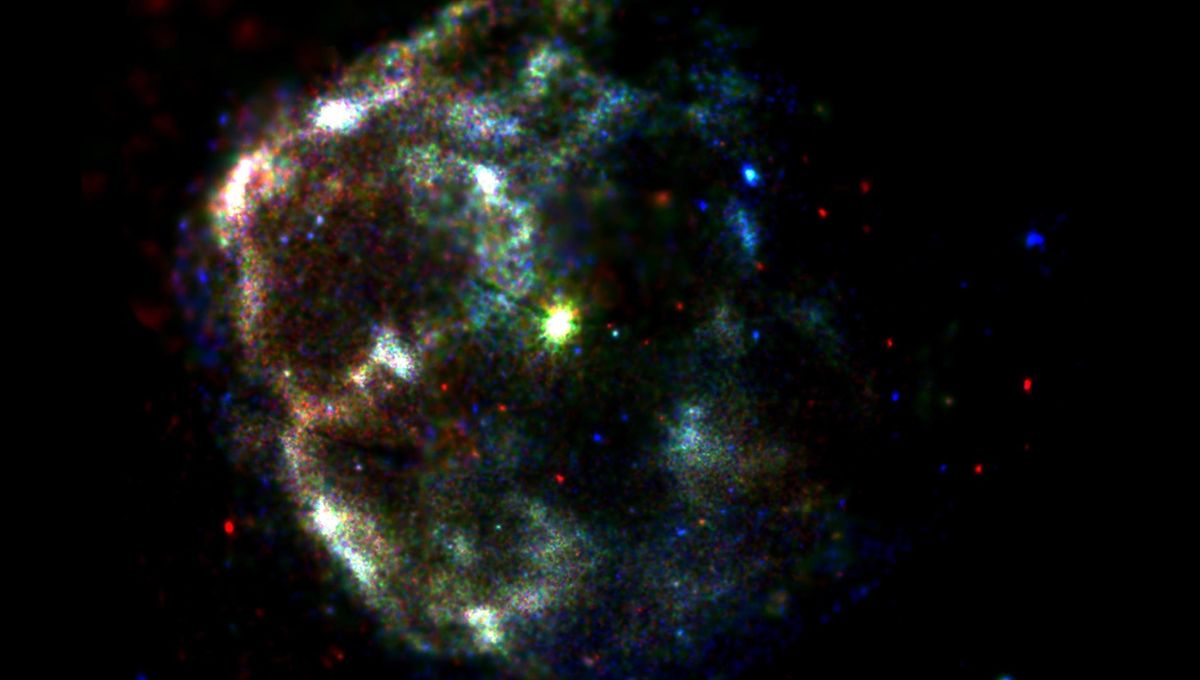
When stars with a mass between 10 and 25 times that of the Sun go supernova, they leave behind a neutron star: an object so dense that a teaspoon of its material weighs like a mountain. Astronomers report new measurements of HESS J1731-347, a record-breaking neutron star. With an estimated mass of just 0.77 times our Sun, it could be the lightest-ever neutron star. Well, maybe – the team also suggests that it might be something else entirely.
“Our mass estimate makes the CCO in HESS J1731-347 the lightest neutron star known to date, and potentially a more exotic object—that is, a ‘strange star’ candidate. We emphasize that while the first part of the statement above is a robust result, the second is an intriguing possibility which is consistent with our analysis,” the authors wrote in their new paper.
They made the estimations using X-ray observations from the XMM-Newton observatory and precise distance measurements from Gaia. HESS J1731-347 is described as the central compact object (CCO) at the core of a supernova remnant, the cloud of debris produced when a star explodes.
The explosive demise of massive stars creates some extreme conditions. During the supernova, the core of the star experiences such high pressure that the protons and electrons in the atoms present merge to produce neutrons. Neutrons are electrically neutral (as the name suggests) so there is no electromagnetic repulsion. Despite weighing like the Sun, the neutron star is not much bigger than a city. At those incredible densities, quantum mechanical effects take hold, keeping the neutron stars from turning into black holes.
Physicists theorize that during the formation, the physics at play could go a step further.
Protons and neutrons are made of triplets of Up and Down quarks – that’s the standard configuration of regular matter. However, under extreme conditions, you can obtain a quark-gluon plasma, where gluons are the particles that mediate the strong nuclear force and keep protons and neutrons together in atoms. Quark matter is a different type of phase of matter again under extreme but different conditions from the quark-gluon plasma.
In particular, a configuration that appears stable in theoretical models is a strange quark star. The strange quark is a heavier version of the down quark. In this scenario, as the star collapses, all this matter is converted into strange quarks. More of observations of this and other similar objects might help us understand if these strange stars are truly out there in the cosmos.
The research is published in Nature Astronomy.
Source Link: Lightest Known Neutron Star Might Be A Strange New Stellar Object